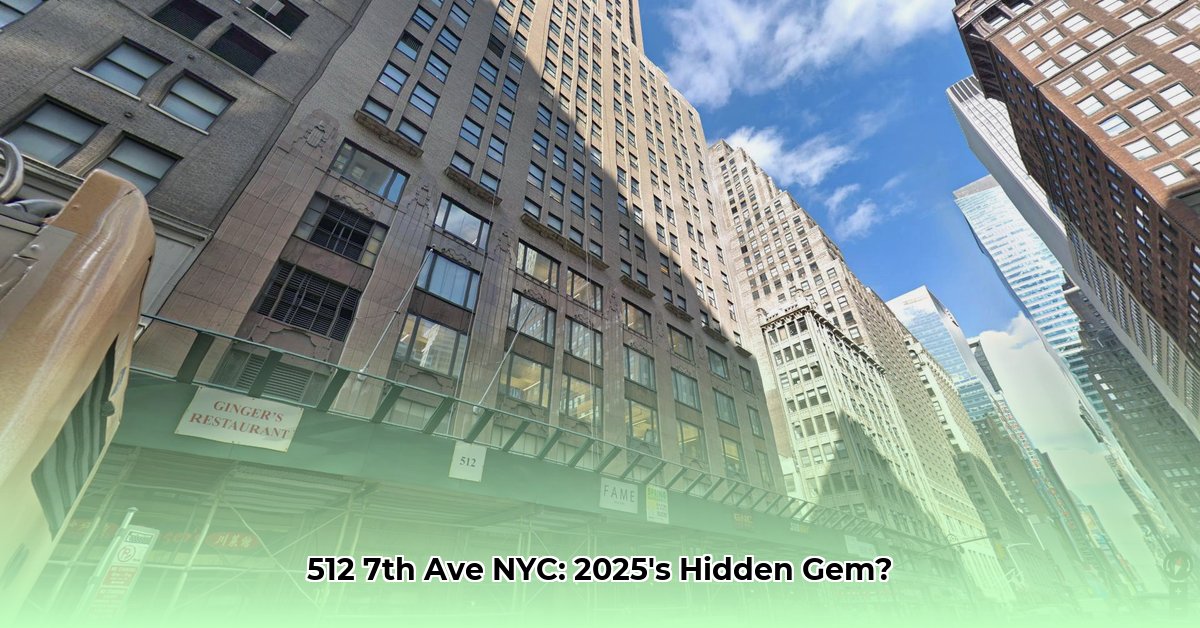
512 Seventh Avenue and The Navarre: A Comparative Case Study
This case study analyzes 512 Seventh Avenue, a 1930s-era building in Midtown Manhattan, and compares its market position to a similar property, The Navarre, to identify opportunities and challenges for stakeholders. The analysis highlights data limitations affecting 512 Seventh Avenue and suggests avenues for future research. This comparative approach provides actionable insights for investors, building owners, and city planners.
Building Profiles: A Historical Context
Both 512 Seventh Avenue and The Navarre represent significant examples of 1930s architecture in Midtown Manhattan. However, readily available public information differs significantly between the two. The Navarre's details – including current occupancy and rental rates – are more accessible, whereas information on 512 Seventh Avenue is scarce, creating a significant data gap in our analysis. Both buildings boast prime locations within a densely populated commercial area and possess inherent potential, but their respective market performance reveals stark contrasts. Further investigation is needed to understand the reasons behind this disparity.
Market Analysis: Contrasting Performance
The Navarre's publicly available data (assuming rental listings) reveals its current market activity and pricing strategies. Conversely, the lack of comparable accessible data for 512 Seventh Avenue significantly limits a direct comparison. This data scarcity represents a broader issue within the NYC commercial real estate market, hindering accurate valuation and market analysis.
While the Navarre may be actively seeking tenants, implying a potential vacancy rate and competitive rental pressures, the situation at 512 Seventh Avenue remains unclear. Is it fully occupied? Is it undergoing renovations not publicly disclosed? The uncertainty surrounding 512 Seventh Avenue necessitates a more proactive approach to data collection to create a comprehensive and accurate market assessment.
Actionable Intelligence:
A deeper understanding of the market dynamics requires extensive research, including:
- Occupancy data: Secure current occupancy rates for both buildings. (This is crucial for accurate valuation).
- Rental rates: Determine current rental rates for comparable spaces in both buildings, if possible. (This is essential for a proper comparative analysis).
- Building improvements: Investigate any recent renovations, upgrades, or planned improvements. (These factors directly contribute to market competitiveness).
Risk Assessment Matrix:
| Risk Factor | Likelihood | Impact | Mitigation Strategy |
|---|---|---|---|
| High Vacancy Rates | Moderate | High | Competitive pricing, targeted marketing, building upgrades, and lease flexibility |
| Data Transparency Issues | High | High | Advocate for improved data reporting standards and public access to commercial real estate data. |
| Market Fluctuations | High | High | Diversified investment strategies, thorough market research, and risk-adjusted valuations. |
| Regulatory Changes | Moderate | Moderate | Proactive monitoring of building codes and zoning laws, and proactive engagement with city officials. |
Regulatory Considerations: Navigating Compliance
Both buildings are subject to NYC building codes, zoning laws, and potentially landmark preservation regulations. Understanding these regulations is crucial for any proposed renovations or repositioning strategies. The lack of public information about 512 Seventh Avenue complicates this assessment, highlighting the importance of proactive compliance efforts to avoid potential legal complications and delays. The need for transparency in this regard is essential for responsible development and investment within the city. Furthermore, adherence to sustainability requirements and accessibility standards will influence the long-term viability and value of both properties.
Conclusion: Opportunities and Challenges
This comparative case study reveals both the potential and challenges inherent in older commercial buildings in Midtown Manhattan. The Navarre provides a benchmark for assessing the market position of similar properties. However, the significant data gap surrounding 512 Seventh Avenue underscores the need for increased transparency in the NYC commercial real estate market. This lack of information presents a challenge but also highlights an opportunity for improved data standardization and public access.
Future Research: Further investigation is needed to acquire complete data on 512 Seventh Avenue. This includes obtaining occupancy rates, rental prices, and details on any renovations or planned redevelopment projects. This information would allow for a more comprehensive comparison to The Navarre and provide a clearer understanding of 512 Seventh Avenue's market position and potential. Furthermore, exploring similar buildings nearby might help establish broader market trends.
Addressing the data limitations will be key to unlocking the full potential of 512 Seventh Avenue and similar properties in Midtown Manhattan. Proactive data collection and transparent information sharing are crucial for responsible real estate investment and development in New York City.